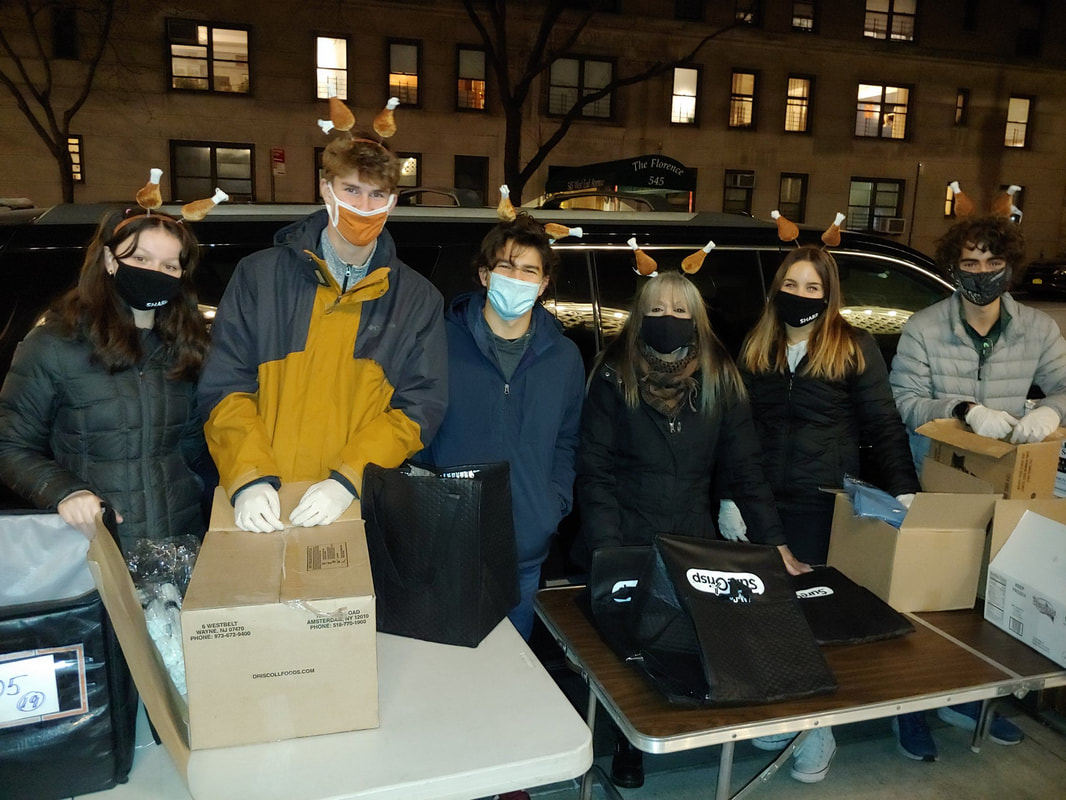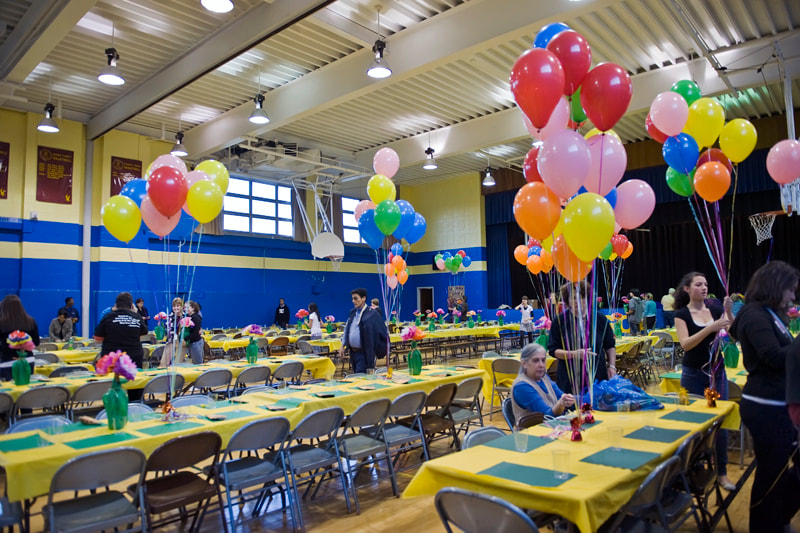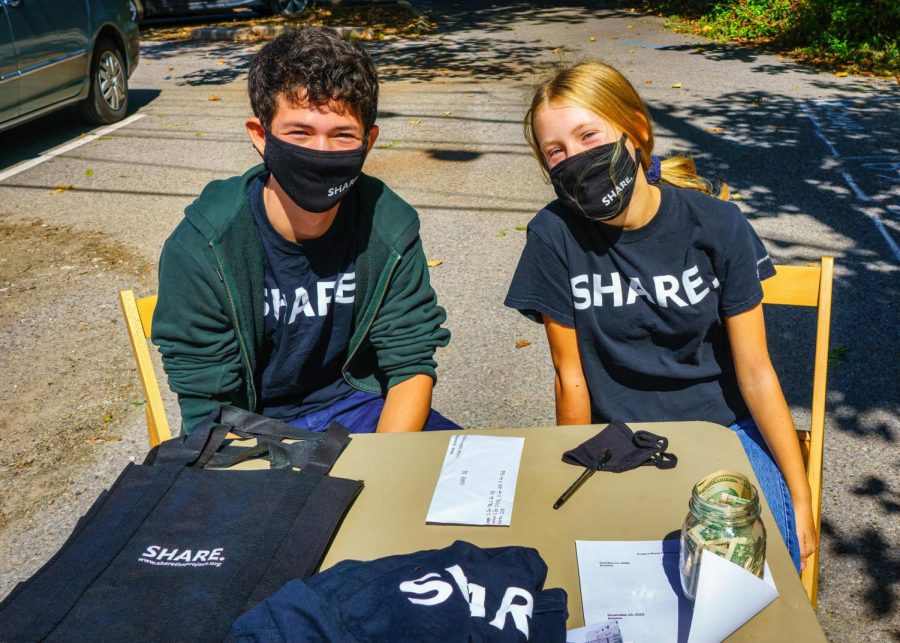SHARE the Project, Pandemic Style
February 10, 2021
SHARE the Project is an organization that strives to make a difference in the larger community of New York. You might know them for their “Midnight Runs,” where students package dinners on Saturday nights and distribute them to the homeless in New York City, or for their flagship Thanksgiving Dinners, where they provide home-cooked meals and transportation to over 500 homeless men and women in the five boroughs and Westchester County. They’ve been bringing positive change to the New York City homeless community for over thirty years, and through the project giving students a better understanding of their social responsibilities.
Jeanne Newman, the founder of SHARE the Project, puts it best: “By transforming community service into social activism and by changing the idea of service ‘requirement’ to ‘choice,’ we lay the foundation for a culture and a society that is richer in understanding and acceptance of the disenfranchised, the disempowered, and the poor.”

In the past year, though, SHARE has faced a challenge they had never met before: how to help, how to share, during a pandemic. For an organization in which human connection plays such a fundamental role, one might think the project would crumble under the pressure of a virus. This wasn’t the case. Rather than stopping, like so many other organizations, SHARE has adapted and evolved to continue its mission while ensuring the safety of everyone involved. I had the opportunity to talk with Jeanne Newman by email, who told me what SHARE has done during these past few months.
“Because so many of our projects focus on direct person-to-person contact, we had to completely reimagine everything that SHARE does. By mid-March last year, we knew that we had to stop our Midnight Runs as the impact of the virus was skyrocketing and at the time so little was known about it. On the first day that Governor Cuomo closed the restaurants, I got phone calls from people who thought I might be able to help give the food away to agencies. And we managed to place a ton of frozen prepared meals in Yonkers via the YMCA, who SHARE has an ongoing relationship with.”
“We were urged to wear masks, but masks became scarce and scarcer so the next thing SHARE did was buy a sewing machine and fabric, elastic and thread, items that became harder and harder to come by. I made calls to people I knew who sewed and asked for help. While I waited for my sewing machine to arrive, I made more calls to friends in the fashion district who helped me obtain paper masks. A former student of mine in Texas saw what SHARE was up to and introduced me to a friend who switched his t-shirt manufacturing factory into a mask-making factory, and we had our first delivery of 5,000 face masks delivered the next week. Those masks were distributed to the homeless in NYC.”
In addition to such immediate and proactive work at the very beginning of the pandemic, SHARE has now re-started and reimagined their Midnight Runs, resuming deliveries to the homeless in NYC which need help now more than ever.
Murphy Botko, a senior on the Student Board of Project SHARE, elaborated on how he thinks SHARE has responded to COVID-19.
“What really stands out to me about Project SHARE’s dealing with the pandemic is the way that we’ve protected ourselves but have also been able to give the homeless the supplies they need to protect themselves. We’ve handed out masks, hand sanitizer, and other essential things that they can’t get access to. We’ve protected ourselves by devising a system of putting the essentials—like sweaters, sweatpants, socks, hats, gloves, hand sanitizer, and food into different sized bags that we label and hand out safely.” He went on to say, “That’s definitely one of the biggest accomplishments in Project SHARE’s history, just being able to get around this pandemic.”
Ms. Newman also talked about how they still managed to do their Thanksgiving Dinner, albeit with a few tweaks.
“The Thanksgiving Dinner for the Homeless was undoubtedly our greatest challenge. For thirty years, we had transformed a cafeteria and a gym into a wonderful holiday tradition. We are truly a large and loving community and it’s a tradition that our homeless and hungry street friends and families genuinely look forward to. We knew from the middle of Spring last year that the dinner was going to have to change. NOT having it wasn’t an option. Ultimately, the Student Board and the Adult Board decided to do a Dinner on Wheels. We leased 4 cargo vans, borrowed a Midnight Run van, and with the Student Board, we sent each van out with their scheduled stops and two cars following behind to distribute 1,000 hot turkey dinners. What I naively thought would take two hours took more than seven, and it was simply a wonderful evening that unfolded before us.”

Bryce Jacobs, another senior on the Board who participated in this “Dinner on Wheels,” called the entire experience “uniquely 2020.”
“I remember scrambling around, packing pre-made turkey dinners into bags along with desserts and snacks while we handed out extra masks as well.”
Murphy added that they’ve “done everything [they] can to give people the feeling of a family, making those turkey meals, putting the mashed potatoes on, and just showing them that there are still people who care and want to make their lives better.”
Throughout everything, the students who are a part of SHARE have done so much to make sure this showing of care is still possible, from redesigning the project SHARE website (www.sharetheproject.org) to just packing up sandwiches and showing up to the runs. Ms. Newman expressed just how grateful she was for this, saying, “year after year, for what is now 32 years, our greatest asset is the kids who are so committed to SHARE, without a doubt.”
In this challenging year, with so many reasons to stop trying, Murphy told me a bit about why SHARE is so important to him, and why he puts so much time and effort into it.
“I definitely think that SHARE has been one of the biggest eye-openers in my life. I lived in the city for several years and never really saw the side of it that needs help. There are so many people who aren’t aware of the need and just go about their lives without thinking about what they can do to make someone else’s life better. Just talking with everyone and seeing that the people we help are normal people who have fallen victim to a system that doesn’t care about them. And as much as there are homeless shelters, it is people like us, like Project Share, that go out to these places and try to make a difference, that really do the most. SHARE is a culmination of the true empathy of the community and shows that there are good people out there who want to make a change.”
Bryce wholeheartedly agreed that his experience with SHARE has been an eye-opener, and that for him the most important part is simply the conversations he has been able to have and the new viewpoints he’s been exposed to.
“I love Project SHARE because of the relationships I form with people that I would never usually get the chance to form, both with students in my school and with individuals from NYC. Jeanne Newman always tells all of the student volunteers at the beginning of each Midnight Run that ‘if you haven’t had one good conversation with a person tonight, you haven’t done the Midnight Run.’ I think this idea perfectly encapsulates what I love about SHARE and what it has taught me: the interactions we have with people from different environments and situations are critical and extremely valuable.”
Unfortunately, some of those conversations have been curtailed due to COVID. When I asked Bryce what he misses most, he said it was “bringing other student volunteers on Midnight runs. Due to limited space, we have only been taking Board members to NYC on Midnight runs. One of the best parts of Project SHARE in the past was getting to know new students of a variety of ages and creating a sense of unity within the volunteers.”
Ms. Newman feels the exact same way, saying, “I miss the in-person meetings up here at the house, I miss the hugging on the Run, I miss the long conversations we’d have at each stop. I simply miss the person-to-person aspect of everything.”
Looking into the future and thinking about what effects this period will have on SHARE, Ms. Newman said, “We will absolutely build on what our pandemic model has taught us and see where it goes. I believe we are a changed community and what I have always admired and truly embraced about all of us at SHARE has been our ability to keep things positive, despite the many obstacles we have had over the years. I think that while the mechanics of our organization have changed, its essence of creating positive change through social action and love remains the absolute same.”
SHARE the Project wants you!
Visit their site at www.sharetheproject.org for all information on their current projects and how you can help!
Or email Jeanne Newman at [email protected] with questions!


















